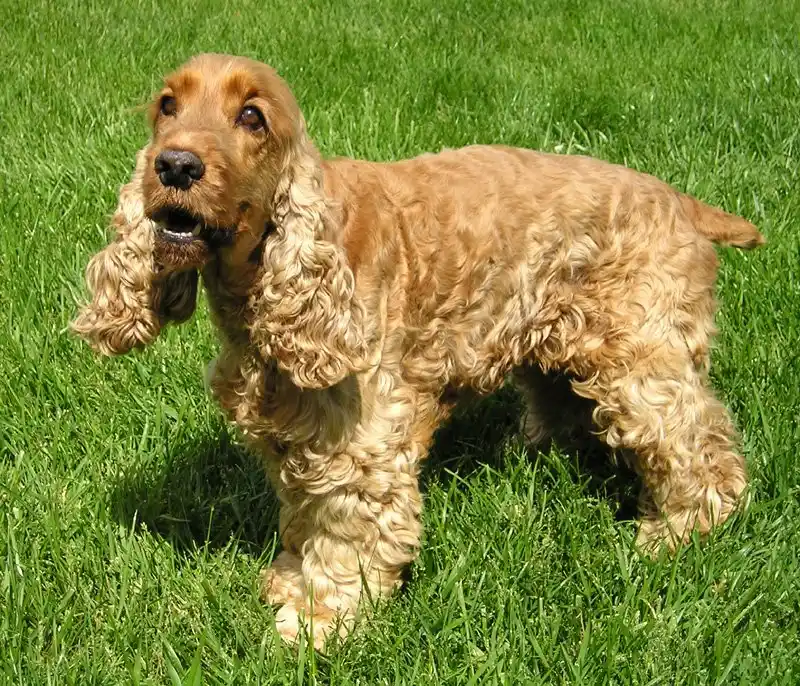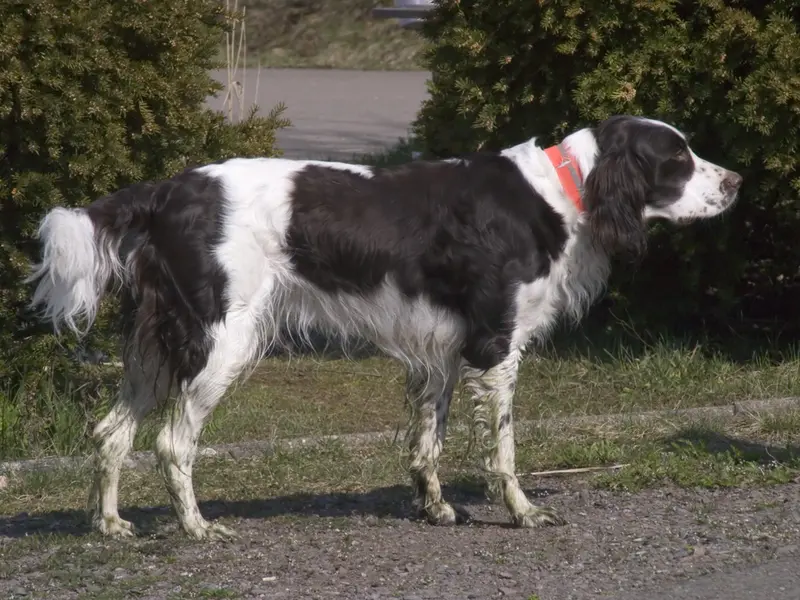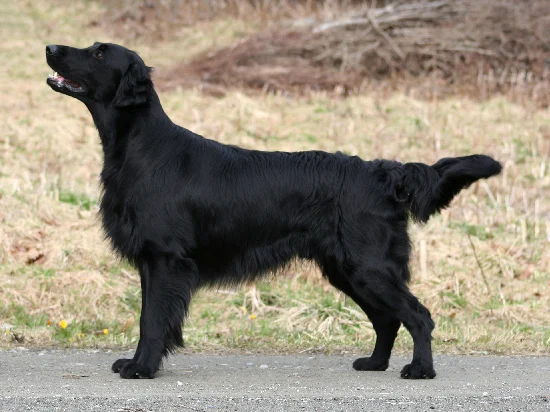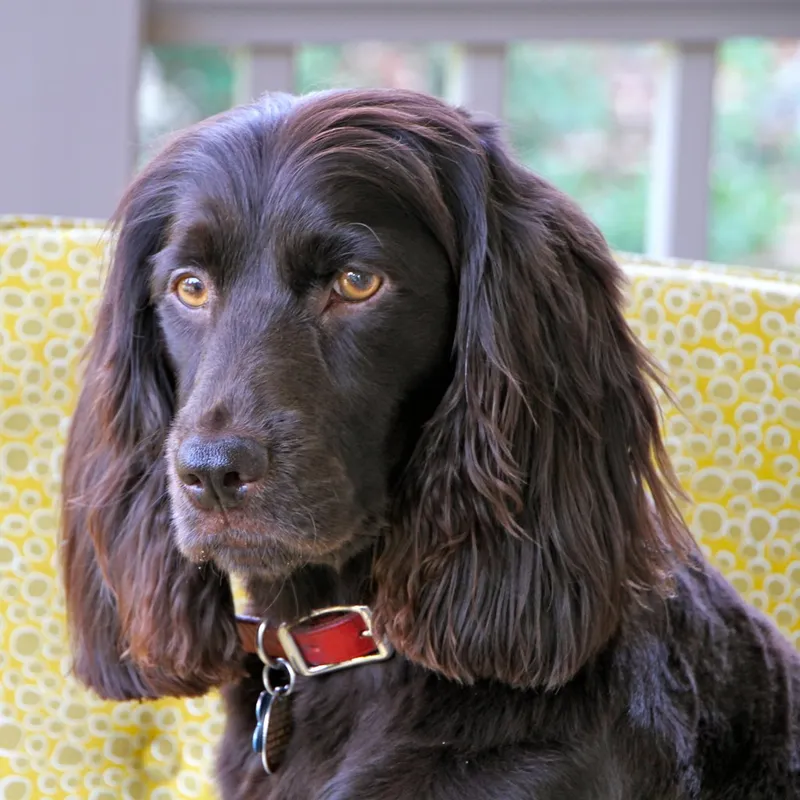Golden Retriever
Golden Retrievers are friendly, intelligent, and versatile dogs known for their loyalty and trainability. They make excellent family pets and excel in various roles, including service and therapy dogs.
Overview
🐕Breed Overview
✨Key Traits
💡What Makes Golden Retriever Special
Golden Retrievers are characterized by their friendly and gentle nature, making them excellent companions for families and individuals alike. They are highly intelligent and eager to please, which contributes to their trainability and success in obedience and agility competitions.
Their love for water and retrieving instinct makes them natural swimmers and excellent at games like fetch. Golden Retrievers are also known for their sociability, getting along well with children, other dogs, and even cats.
Their gentle disposition means they are not suited for guarding but are incredibly loyal and protective of their families in a loving way. These traits make them versatile dogs that excel in various roles, from family pets to service dogs.
The Golden Retriever is a beloved breed known for its friendly disposition, intelligence, and versatility. Originating in Scotland in the mid-19th century, this breed was developed by Lord Tweedmouth to retrieve game from both land and water. With a striking golden coat that can range from light to dark shades, Golden Retrievers are not only visually appealing but also possess a gentle and loving temperament that makes them ideal family pets.
They are known for their exceptional trainability, ranking among the top breeds for obedience and versatility in various roles, including guide dogs, therapy dogs, and search and rescue participants. Their friendly nature makes them excellent companions for children and other pets, and they thrive in active households where they can engage in daily exercise and play. Golden Retrievers require regular grooming to manage shedding and maintain their beautiful coats.
With a lifespan of 10 to 14 years, they are a long-term commitment that brings joy and companionship to families around the world. Whether participating in agility competitions or simply enjoying a game of fetch, Golden Retrievers are always eager to please and make wonderful additions to any home.
🎉Fun Facts
Golden Retrievers are known for their love of water and often enjoy swimming and retrieving items from lakes or pools.
Golden Retrievers have been featured in numerous films and TV shows, showcasing their friendly and loyal personalities.
They are one of the most popular breeds for therapy and assistance work due to their gentle nature and intelligence.
Breed Characteristics
Family & Friends
Good Behavior
Get Up & Go
Household Harmony
Temperament & Personality
✨Key Traits
🐕Core Temperament
Golden Retrievers are known for their friendly, gentle, and confident temperament. They are highly sociable and enjoy being around people, making them excellent family pets. Their patience and playfulness make them great companions for children, and they are generally good with other pets.
While they are not aggressive, their friendly nature means they may not be suitable as guard dogs. Golden Retrievers are intelligent and eager to please, which makes them highly trainable. They thrive on positive reinforcement and enjoy learning new tasks.
Their calm demeanor allows them to adapt well to various situations, making them versatile companions.
💫Personality Profile
Golden Retrievers are renowned for their friendly and gentle temperament. They are highly sociable dogs that thrive on human interaction and companionship.
Their intelligence and eagerness to please make them highly trainable, and they excel in obedience training. They are known for their playful nature and enjoy engaging in various activities, including fetch and swimming.
Golden Retrievers are generally good with children and other pets, making them excellent family companions. Their calm demeanor and patience allow them to adapt well to different environments, whether in a bustling household or a quiet setting.
🔊Vocal Tendencies
Golden Retrievers are generally moderate barkers. They may bark to alert their owners of strangers or unusual sounds, but they are not known for excessive barking.
Their vocalizations can include playful barks during playtime or soft whines when they seek attention. Overall, they are not considered yappy dogs, and their barking is usually appropriate and manageable.
Their friendly nature means they are more likely to greet visitors with enthusiasm rather than aggression.
Affection & Social Traits
Energy & Activity
Communication Style
Care Requirements
🏃♂️Exercise Requirements
Daily Exercise
Golden Retrievers are an active and energetic breed that requires substantial daily exercise to maintain their physical and mental well-being. Ideally, they should engage in at least 60 to 120 minutes of exercise each day, which can be broken down into multiple sessions. Activities should include brisk walks, runs, swimming, and playtime with toys or other dogs.
Fetching games are particularly enjoyable for them, as they have a natural instinct to retrieve. Puppies may require shorter, more frequent play sessions to avoid overexertion, while senior dogs may benefit from gentler activities like leisurely walks or swimming to accommodate their fitness levels. Regular exercise helps prevent obesity, reduces behavioral issues, and promotes overall happiness in Golden Retrievers.
Insufficient exercise can lead to weight gain, destructive behavior, and increased anxiety or restlessness.
Preferred Activities
🏠Living & Adaptability
Space Requirements
Golden Retrievers thrive in environments that provide ample space for exercise and play. They are well-suited for homes with large yards or access to open areas where they can run and explore.
While they can adapt to apartment living, it is essential to ensure they receive sufficient outdoor exercise and mental stimulation. Owners in smaller living spaces should commit to daily walks and playtime at parks or dog-friendly areas.
Due to their instinctual tendency to roam, a securely fenced yard is recommended to keep them safe. Lack of adequate space can lead to boredom, anxiety, and destructive behaviors, so providing a stimulating environment is crucial.
Climate Preference
🍲Feeding Guide
Schedule
Food Types
Portion Size
Special Nutritional Needs
Golden Retrievers may be prone to obesity, so it is essential to monitor their diet and adjust portions accordingly. High-quality dog food that meets their nutritional needs is crucial, particularly during their growth stages. Regular vet check-ups can help identify any specific dietary needs or restrictions.
✨Grooming Requirements
Grooming Overview
Golden Retrievers have a dense, water-repellent double coat that requires regular grooming to keep it healthy and free of mats. They should be brushed at least once a week, with more frequent brushing during shedding seasons in spring and fall.
Use a slicker brush or an undercoat rake to remove loose hair and prevent tangles. Bathing should be done every two months or as needed, using a gentle dog shampoo.
Regularly check and clean their ears to prevent infections, and trim their nails every few weeks to keep them at a manageable length. Overall, maintaining their coat and hygiene is essential for their health and comfort.
Care Schedule
Brush at least once a week; daily during heavy shedding; bathe every two months; trim nails every two weeks.
Health Profile
⚕️Health Care
Regular health care is crucial for Golden Retrievers to ensure a long and healthy life. Routine veterinary check-ups, vaccinations, and preventive treatments for parasites are essential.
Early detection of health issues through regular examinations can lead to better management and treatment options. Maintaining a healthy weight through diet and exercise is also vital for their overall health.
Health Issues Overview
⏳Average Lifespan
Genetic Factors
Genetics play a significant role in the lifespan of Golden Retrievers. Certain hereditary health issues, such as hip dysplasia and cancer, are more prevalent in the breed.
Responsible breeding practices, including health screenings for potential genetic disorders, can help reduce the risk of these issues. Prospective owners should seek out reputable breeders who prioritize health testing and genetic diversity in their breeding programs.
Living Conditions
Golden Retrievers thrive in environments that provide ample space for exercise and social interaction. They do well in suburban or rural settings where they can engage in outdoor activities.
A fenced yard is ideal to prevent them from roaming. Their lifespan can be positively influenced by a healthy diet, regular exercise, and routine veterinary care.
Stressful environments or lack of socialization can negatively impact their overall health and longevity.
🏥Common Health Issues
Hip Dysplasia
Warning Signs
🔬Diagnosis
X-rays and physical examination by a veterinarian.
💊Treatment
Surgical options or medication for pain management.
📝Management Tips
Maintain a healthy weight, provide joint supplements, and engage in low-impact exercises.
Cancer (Hemangiosarcoma, Lymphosarcoma)
Warning Signs
🔬Diagnosis
Biopsy or imaging techniques like X-rays or ultrasounds.
💊Treatment
Chemotherapy, surgery, or palliative care.
📝Management Tips
Regular veterinary check-ups and screenings for early detection.
Elbow Dysplasia
Warning Signs
🔬Diagnosis
X-rays and physical examination.
💊Treatment
Surgical intervention or medication.
📝Management Tips
Weight management and controlled exercise.
Eye Disorders (Cataracts, Progressive Retinal Atrophy)
Warning Signs
🔬Diagnosis
Ophthalmic examination by a veterinary ophthalmologist.
💊Treatment
Surgery for cataracts, no cure for progressive retinal atrophy.
📝Management Tips
Regular eye check-ups and monitoring for symptoms.
🛡️Preventive Care
🔬Hip Evaluation
Evaluates the hip joints for dysplasia and other abnormalities, crucial for preventing joint issues.
📅 Before breeding and annually after 2 years of age.
🔬Elbow Evaluation
Assesses the elbow joints for dysplasia and other conditions, important for maintaining mobility.
📅 Before breeding and annually after 2 years of age.
🔬Eye Examination
Checks for common eye diseases, including cataracts and retinal issues, essential for maintaining vision health.
📅 Annually after 2 years of age.
🔬Cardiac Evaluation
Evaluates heart health, particularly for conditions like subvalvular aortic stenosis, important for overall cardiovascular health.
📅 Annually after 2 years of age.
Training
🧠Intelligence & Trainability
💪Work Drive
Golden Retrievers have a strong work drive and thrive when given tasks to complete. Their natural retrieving instinct makes them excellent candidates for activities such as fetch, agility, and obedience trials.
Engaging them in regular training sessions and providing them with mentally stimulating toys can help satisfy their need for mental engagement. Without sufficient mental and physical stimulation, they may become bored and exhibit undesirable behaviors.
Their history as hunting and working dogs means they excel in roles that require focus and dedication.
⚠️Training Considerations
Golden Retrievers are generally eager to please and highly trainable, but they can face challenges such as overexcitement, stubbornness, or distraction during training sessions. To overcome these challenges, it is essential to use positive reinforcement techniques, such as treats and praise, to motivate them.
Consistency in training is crucial, as they thrive on routine. Socialization from a young age is also important to help them become well-adjusted adults.
Engaging them in various activities, such as obedience classes or agility training, can help channel their energy and focus their minds.
📝Training Tips
Training a Golden Retriever can be a rewarding experience due to their intelligence and eagerness to learn. Start with basic obedience commands such as sit, stay, and come, using positive reinforcement methods. Keep training sessions short and fun to maintain their interest.
Incorporate play into training to make it enjoyable. Socialization is vital; expose them to different environments, people, and other animals to build their confidence. Advanced training in agility or retrieving can further stimulate their minds and strengthen the bond between dog and owner.
Regular practice and patience will yield excellent results.
History & Heritage
📜Origin Story
The story of the Golden Retriever begins in the Scottish Highlands, where Lord Tweedmouth sought to create a versatile hunting dog that could retrieve game from both land and water. In the 1860s, he bred a yellow Wavy-Coated Retriever named Nous with a Tweed Water Spaniel named Belle, producing four puppies that laid the foundation for the breed.
Over the years, Lord Tweedmouth continued to refine the breed through selective breeding, incorporating other breeds such as Irish Setters and Bloodhounds. The result was a dog that was not only skilled in retrieving but also possessed a friendly and gentle temperament.
The breed gained recognition in the early 20th century and has since become one of the most popular dog breeds in the world.
⏳Development History
The Golden Retriever was developed in the mid-19th century in Scotland by Lord Tweedmouth, who sought to create a breed capable of retrieving game from both land and water. The breed originated from a careful crossbreeding of the now-extinct Tweed Water Spaniel, Yellow Wavy-Coated Retrievers, and Bloodhounds.
Over the years, the breed has evolved, with distinct lines emerging, including British, American, and Canadian types, each with slight variations in appearance and temperament. The breed was officially recognized by the American Kennel Club in 1925 and has since gained immense popularity as a family pet and working dog.
🛡️Purpose & Historical Role
Originally bred as hunting dogs, Golden Retrievers were utilized to retrieve shot game, particularly waterfowl, during hunting expeditions. Their exceptional swimming abilities and gentle mouths made them ideal for this role, as they could bring back game without damaging it. Over time, their versatility has led them to excel in various roles, including assistance dogs for the disabled, search and rescue dogs, and therapy dogs, showcasing their intelligence and eagerness to please.
🏺Cultural Significance
The Golden Retriever has become one of the most beloved dog breeds worldwide, known for its friendly demeanor and intelligence. They have played significant roles in various fields, including as guide dogs for the visually impaired, therapy dogs, and search and rescue dogs.
Their popularity in films and television, such as 'Air Bud' and 'Homeward Bound', has further cemented their status as family companions. In the United States, they consistently rank among the top breeds for family pets, showcasing their gentle nature and compatibility with children.
Conservation Status
This breed is well-established with healthy population numbers.









